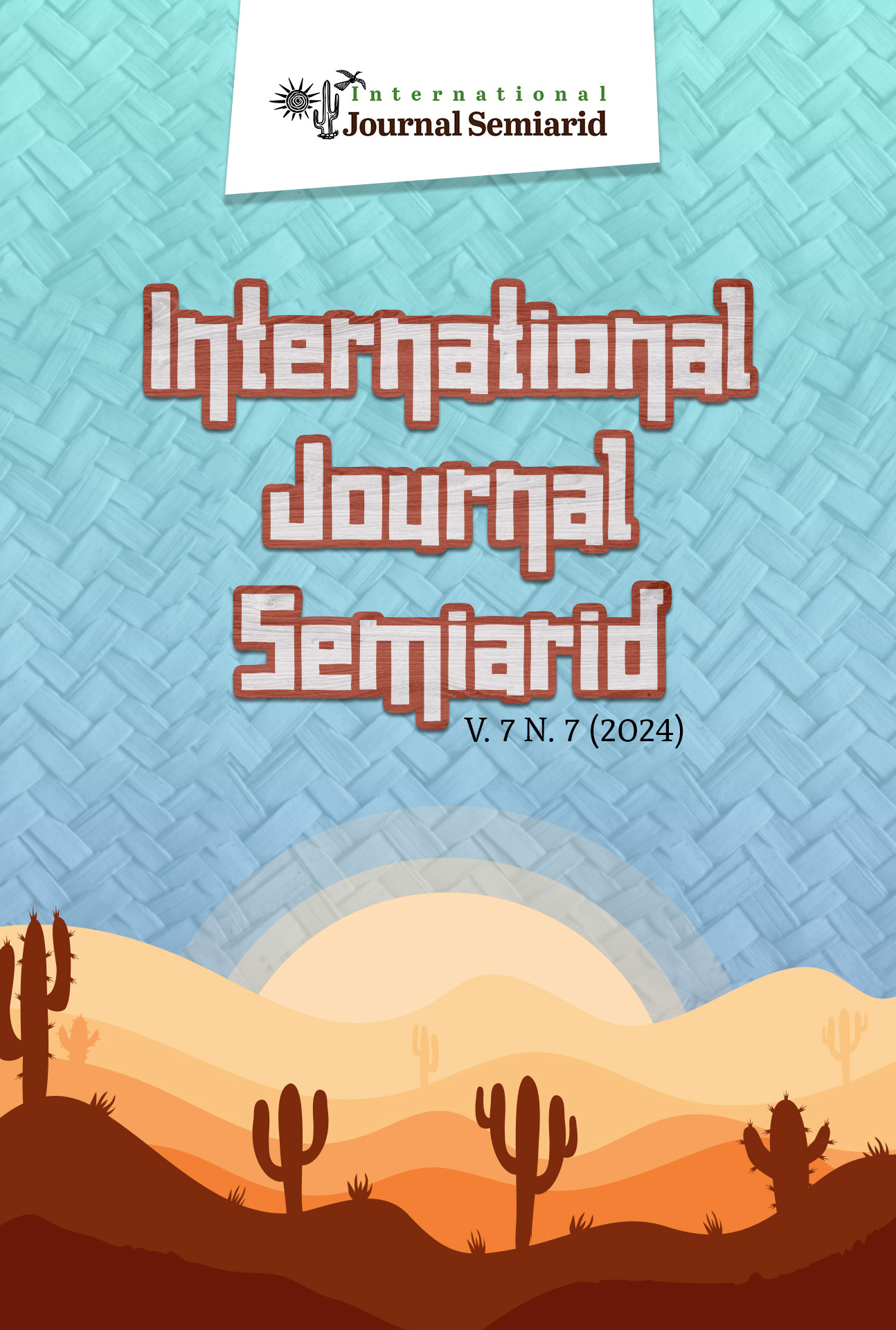USE AND CULTIVATION OF MEDICINAL PLANTS: AN EXPERIENCE AT EMTI PROFESSOR JOAQUIM FRANCISCO DE SOUSA FILHO, FORTALEZA-CEAR
DOI:
https://doi.org/10.56346/ijsa.v7i7.193Keywords:
Agroecology, Geography, Field class, Indigenous culture, Active MethodologiesAbstract
This research presents na experience report that occurred in the first semester of 2023 in the CAPES Pedagogical Residency Program – Geography subproject of the Federal University of Ceará developed at the Escola de Tempo Integral Professor Joaquim Francisco De Sousa Filho, in the final years of elementary school in the city of Fortaleza (CE) with the objective of articulating the University and basic education. Its development occurred in stages, from the theoretical framework, class planning to field visits, emphasizing the theme of Agroecology, especially the importance of medicinal plants linked to indigenous culture, a subject covered in the textbook adopted at that school. It also showed the importance of using active methodologies within the classroom to delve deeper into topics involving traditional knowledge and indigenous communities. In the process of preparing the research, two 7th year students were selected for a visit to the Pitaguary indigenous community (in Maracanaú and Pacatuba located in the Metropolitan Region of Fortaleza) with the aim of bringing them closer to other realities that could be shared with others. Students. The socialization of the visit was presented in the form of a scientific work (poster) at the school science fair, in which the importance of promoting mutual knowledge and experiences was noted and highlighting that the university’s approach to basic education has repercussions on the construction of geographic education with criticality and practicality in your daily life.
References
ALVES, Jucinara Ferreira et al. A Importância do planejamento escolar para a atuação em sala de aula. VI Congresso Nacional de Educação. 2021.
AZEVEDO, Edeílson Matias de. Livro didático: uma abordagem histórica e reflexões a respeito do seu uso em sala de aula. Cadernos da FUCAMP, Monte Carmelo: FUCAMP, v. 4, n. 4, 2003.
BRASIL. Ministério da Educação e Cultura. Secretaria da Educação Básica. Base Nacional Curricular Comum. 2017. Disponível em: http://basenacionalcomum.mec.gov.br/abase/
BRASIL. Lei nº 11.645, de 10 de março de 2008. Disponível em: https://etnicoracial.mec.gov.br/images/pdf/lei_11645_100308.pdf.
BRASIL. CAPES: Coordenação de aperfeiçoamento de pessoal de nível superior. 2023. Disponível em https://www.gov.br/capes/pt-br/acesso-a-informacao/acoes-e-programas/educacao-basica/programa-residencia-pedagogica
CASTROGIOVANNI, Antônio C. Subir aos sótãos para descobrir a geografia. In: MARTINS, Rosa E. M. W.; TONINI, Vaine M.; GOULART, Lígia B. (Org.). p.94.2014.
CIGOLINI, Adilar Antônio; SILVA, Michelle Correa. A temática indígena no ensino de geografia: problemas e caminhos. Revista Geografar, v.15, n.1, p. 82-100. Curitiba, 2020.
DELLORE, César Brumini. Araribá mais Geografia. Editora Moderna. 1. Ed. – São Paulo: Moderna, 2018.
LUCENA, Karol Karen do Nascimento; et al. Utilização da charge como recurso didático no ensino de geografia. VIII ENALIC. 2021. Disponível em : https://www.editorarealize.com.br/editora/anais/enalic/2021/TRABALHO_COMPLETO_EV163_MD1_SA101_ID364_26102021201650.pdf
SANMARTÍ, N. Didática de las ciências em la educación ecundaria obligatoria. Madrid: Sintesis Educación, 2002.
SANTOS, Juliana Moreira; TORRES, Marcélia Vieira; DE PAULA, Davis Pereira. A utilização de trilhas urbanas no ensino de Geografia no ensino Fundamental – anos finais: conhecendo o espaço urbano. X Fala professor. Fortaleza, 2023. disponível em: https://www.falaprofessor2023.agb.org.br/anais/trabalhos/lista?simposio=22#J
SILVA, André Felipe; JUNIOR, Rogerio Jose. Aula de campo como prática de ensino-aprendizagem: sua importância para o ensino da geografia. XVII Encontro Nacional de Geógrafos. 2016.
WERNER, Liz Oliveira; et al. Projeto mãos na terra: O que pode a agroecologia na escola? Editora Nupem. 2021. P.219


